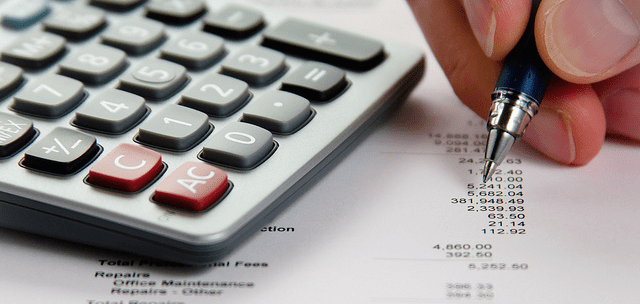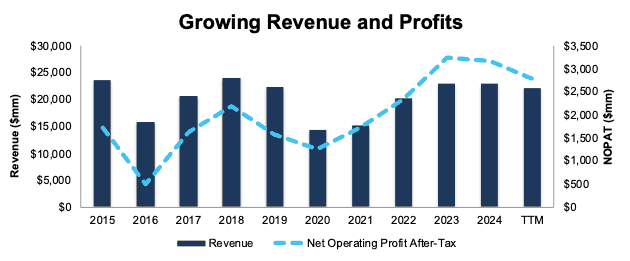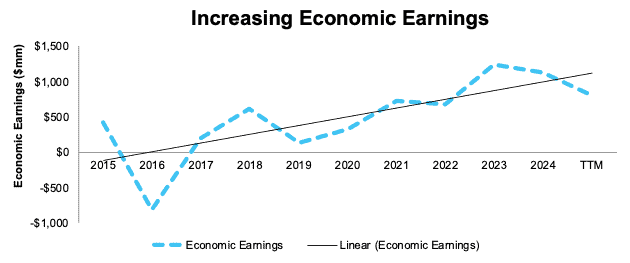Incentives steer corporate behavior, and executives drive where the pay points. If executives’ pay points to revenue or unreliable metrics like adjusted EBITDA, leaders will chase those numbers.
Chasing growth without regard to real profits is like a football team racking up yards but never scoring any touchdowns – it looks good on paper, but the team keeps losing. Focusing on the wrong metrics destroys shareholder value and hurts the financial health of the company.
We strongly believe that companies that tie executive compensation to metrics that drive real shareholder value present some of the greatest investment opportunities. There is no better metric for measuring the creation of shareholder value than return on invested capital (ROIC). Linking executive compensation to ROIC aligns the interests of the executives with those of the shareholders.
Our Exec Comp Aligned with ROIC Model Portfolio includes only those stocks that (1) receive an Attractive-or-better rating and (2) directly link executive compensation to ROIC (or similar variations). We believe this combination signals disciplined capital allocation and strong upside potential.
We are proud to offer the Exec Comp Aligned with ROIC Model Portfolio, and we are excited to give you a free stock pick from this Model Portfolio.
The goal behind sharing these free stock picks with you is to deliver insight into the uniquely high value-add of our research. We want you to know how hard we work and how we do research, so you know what you should expect from a good research provider and how real AI works.
We update this Model Portfolio monthly, and August’s Exec Comp Aligned with ROIC Model Portfolio was updated and published for clients on August 15, 2025.
Free Stock Pick for August: Halliburton Company (HAL: $21/share)
Halliburton has grown revenue and net operating profit after tax (NOPAT) by 10% and 20% compounded annually since 2020, respectively. The company’s NOPAT margin improved from 9% in 2020 to 13% in the TTM and invested capital turns increased from 0.7 to 0.8 over the same time. Rising NOPAT margins and invested capital turns drive the company’s return on invested capital (ROIC) from 5% in 2020 to 10% in the TTM.
Figure 1: Halliburton’s Revenue & NOPAT: 2015 – TTM
Sources: New Constructs, LLC and company filings
Executive Compensation Properly Aligns Incentives
Halliburton’s executive compensation plan aligns the interests of executives and shareholders by tying a portion of its long-term incentive compensation to return on capital employed (ROCE), according to the company’s proxy statement. In fact, in the proxy statement, Haliburton management notes they believe “Return on Capital Employed (ROCE) to be the most important financial performance measure used to link company performance to compensation actually paid.”
The company’s inclusion of ROCE, a variation of ROIC, has helped create shareholder value by driving higher ROIC and economic earnings. When we calculate Halliburton’s ROIC using our superior fundamental data, we find that it has increased from 5% in 2020 to 10% in the TTM. Economic earnings rose from $320 million to $808 million over the same time.
Longer-term, Halliburton improved economic earnings from $425 million in 2015 to $808 million in the TTM. See Figure 2.
Figure 2: Halliburton’s Economic Earnings: 2015 – TTM
Sources: New Constructs, LLC and company filings
HAL Has Further Upside
At its current price of $21/share, HAL has a price-to-economic book value (PEBV) ratio of 0.6. This ratio means the market expects Halliburton’s NOPAT to permanently fall 40% from current levels. This expectation seems overly pessimistic for a company that has grown NOPAT 11% and 4% compounded annually over the last five and fifteen years, respectively.
Even if Halliburton’s:
- NOPAT margin falls to 9% (below five-year average of 12% and TTM NOPAT margin of 13%) through 2034, and
- revenue grows just 1% (below 15-year compound annual revenue growth of 3%) compounded annually through 2034 then,
the stock would be worth $27/share today – a 29% upside. Contact us for the math behind this reverse DCF scenario. In this scenario, Halliburton’s NOPAT would fall 3% compounded annually from 2025 through 2034.
Should the company grow NOPAT more in line with historical growth rates, the stock has even more upside.
Critical Details Found in Financial Filings by Our Robo-Analyst Technology
Below are specifics on the adjustments we made based on Robo-Analyst findings in Halliburton’s 10-K and 10-Qs:
Income Statement: we made over $1 billion in adjustments with a net effect of removing just under $700 million in non-operating expense. Professional members can see all adjustments made to the company’s income statement on the GAAP Reconciliation tab on the Ratings page on our website.
Balance Sheet: we made around $15 billion in adjustments to calculate invested capital with a net increase of over $6 billion. One of the most notable adjustments was for asset write downs. Professional members can see all adjustments made to the company’s balance sheet on the GAAP Reconciliation tab on the Ratings page on our website.
Valuation: we made under $10 billion in adjustments with a net decrease to shareholder value of $8 billion. The most notable adjustment to shareholder value was total debt. Professional members can see all adjustments to the company’s valuation on the GAAP Reconciliation tab on the Ratings page on our website.
This article was originally published on August 22, 2025.
Disclosure: David Trainer, Kyle Guske II, and Hakan Salt receive no compensation to write about any specific stock, style, or theme.
Questions on this report or others? Join our online community and connect with us directly.


